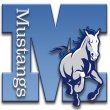Course Tools
Objective and Syllabus
Overview of the 2nd Grade Curriculum
Second graders should be able to read (both aloud and silently), with fluency, accuracy and comprehension any story or text appropriately written for second grade. We will cover topics such as pets, nature, friends, people and families, fact and fictional stories, and tales.
Writing:
Second graders will be able to produce a variety of writings - such as stories, reports, letters, poems, and descriptions. With assistance they should be able to produce written work with a beginning, middle, and end. They will also begin to revise and edit their own written work.
Spelling:
Students will be expected when writing independently to represent all the sounds of a word, writing each sound as a letter or combination of letters. As new spelling patterns are introduced they will be expected to use them. They will also begin to use a beginner dictionary to check their spelling.
Handwriting:
Second graders will continue to work on their printing skills during the first and second semester. They may begin working on their cursive writing during the last part of second semester if they are ready.
Grammar:
Students will understand what a complete sentence is and identify subject and predicate in simple sentences. Identify simple parts of speech: noun, verb, adjective. Use adjectives to compare using -er and -est. Change regular verbs from simple present to past tense using -ed. Use the correct forms for present and past tense of common irregular verbs (for example be, have, see, do, go, come, run, give, sing). Recognize singular and plural nouns, and form the regular plural by adding -s know to add -es to nouns ending in s, ss, sh, ch, or x. Know that some nouns change their spelling in plural form (for example man, men; woman, women; child, children; tooth, teeth; foot, feet). Use capital letters for: the first word in a sentence, proper nouns, the pronoun I, holidays and months and days of the week, names of countries, cities, states, main words in titles, and initials. They should also use correct end punctuation: period, question mark, or exclamation point. Recognize the comma and how to use it between day and year when writing a date, and between city and state in an address. Recognize the apostrophe and how it is used in common contractions. Recognize common abbreviations and understand antonyms and synonyms.
History and Geography:
We will be covering maps, globes, and other geographical tools. We will review continents, cardinal directions, oceans, and poles. We will study continents and where they are located.
In terms of American History we will look at the American Constitution, demonstrate voting skills, identify rules that keep a voting process fair, and explain why voting is important. The civic identity of the United States is shaped by historical figures, places and events and by key foundational documents and other symbolically important artifacts. Individuals, businesses and governments interact and exchange goods, services and resources in different ways and for different reasons; interactions between buyers and sellers in a market determines the price and quantity exchanged of a good, service or resource.
Mathematics:
Numbers and Number Sense:
Recognize and write numbers to 1,000
Read and write numbers from one to one-hundred.
Order and compare numbers to1,000, using <,>, and =.
Count by twos, threes, fives, and tens
Use a number line.
Use tallies.
Identify ordinal positions, 1st to 20th, and write words for ordinal numbers.
Identify even and odd numbers.
Identify dozen,and half dozen.
Recognize place value ones, tens, hundreds, and thousands.
Write numbers to hundreds in expanded form.
Given a number identify one more, one less, ten more, ten less.
Round to nearest ten.
Create bar graph.
Identify and extend numerical and symbolic patterns.
Record numeric data systematically and find the lowest and highest values in a data set.
Fractions:
1/2, 1/3, 1/4, 1/5, 1/6, 1/8, 1/10
Money:
Use $, decimal, cent sign, show different combination of coins that equal same amounts of money, and add and subtract money.
Computation:
Addition, subtraction, introduction to multiplication, solving problems and equations.
Measurement:
Linear Measurement, weight (mass), capacity (volume), temperature, time
Geometry:
Basic plane figures, perimeter, solid figures, congruent shapes, recognize lines as parallel, horizontal, vertical, or perpendicular, name lines and line segments, and identify lines of symmetry.
Science:
Measure, record and describe weather conditions using common tools. Describe the characteristics of plants at different stages of their life cycles.
Recognize that plants need space, water, nutrients and air, and that they fulfill these needs in different ways. Describe and sort plants into groups in many ways, according to their physical characteristics and behaviors. Explain how engineered or designed items from everyday life benefit people.


